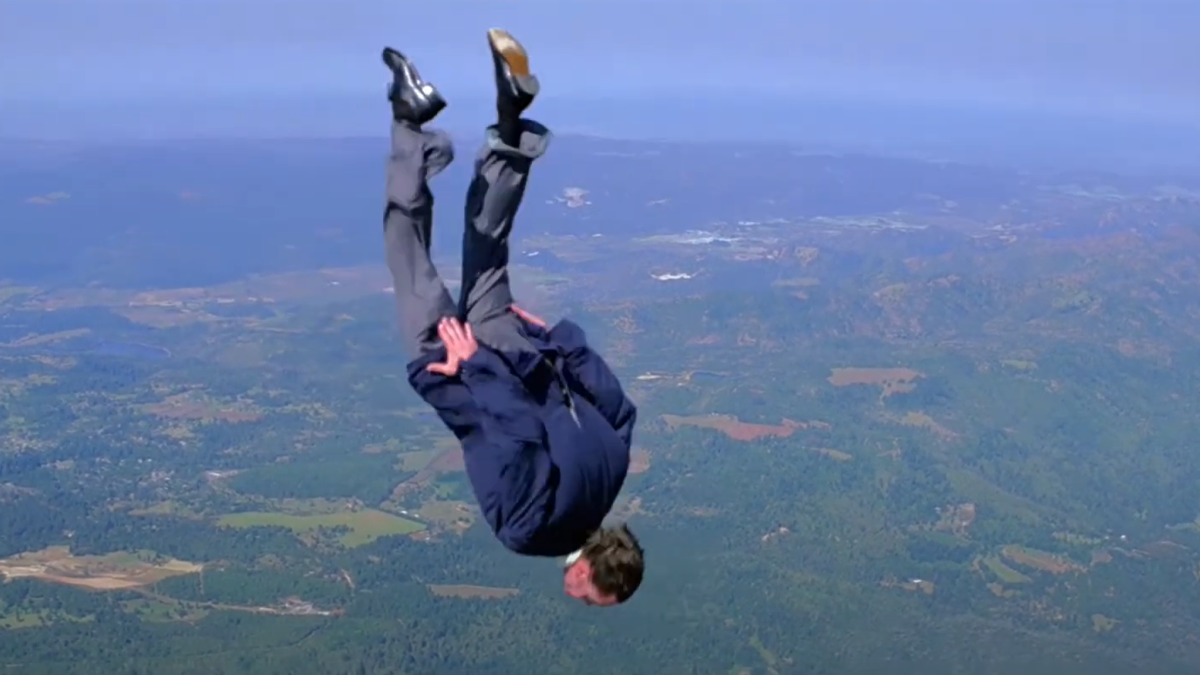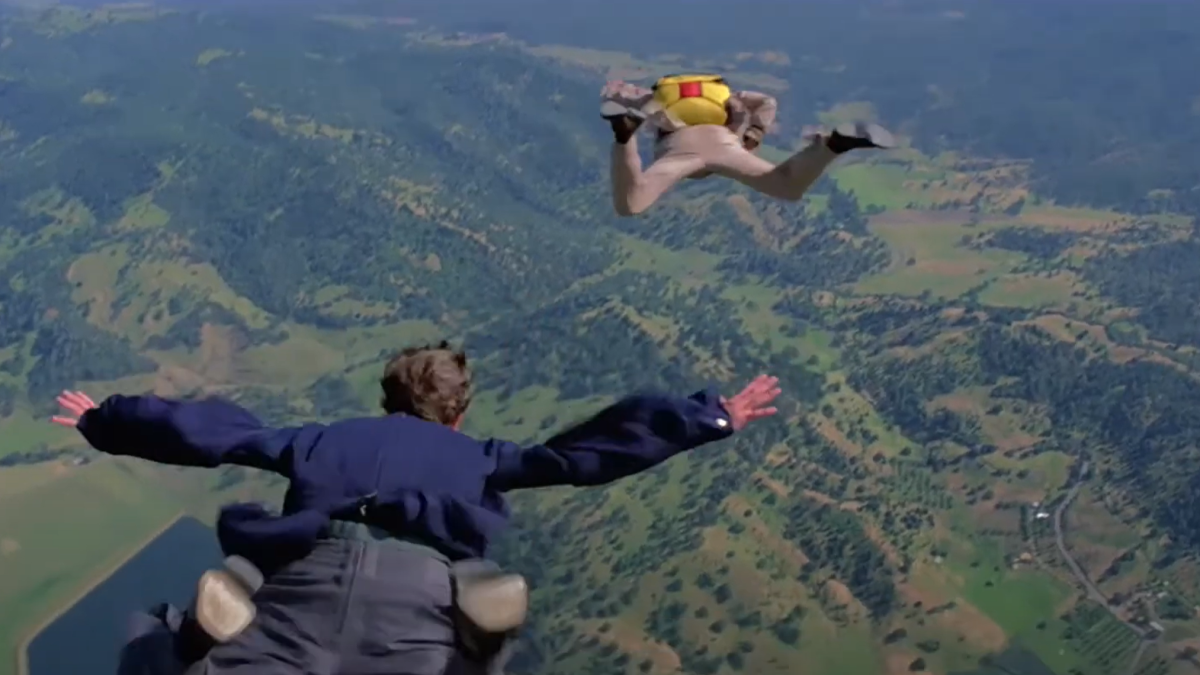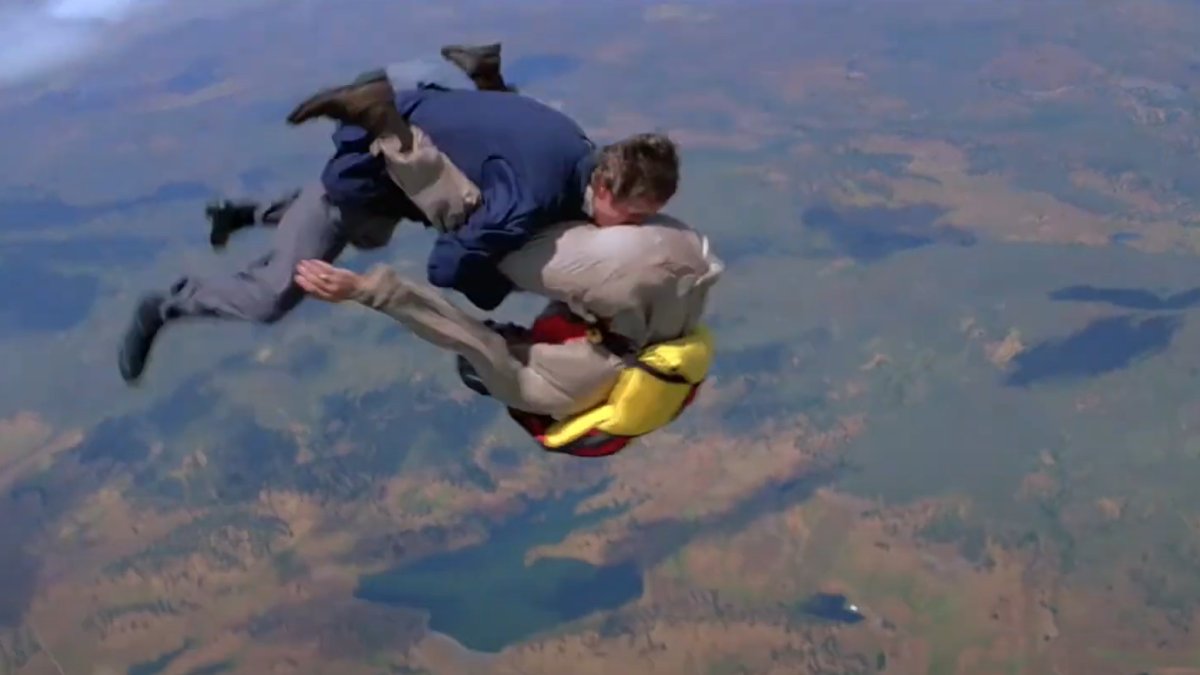I love the 007 franchise, even (especially) the stupid parts, and Moonraker is an objectively stupid movie. In its defense, it was probably never trying to be anything else. It’s all of the most embarrassing things about James Bond rolled into one — the sugar-rushing eight-year-old boy’s concept of a plot, the obnoxious eagerness to jump headlong into whatever genre is catching the attention of the audience at the time, Roger Moore — all of it. It’s just shy of miraculous that J.W. Pepper doesn’t float past Hugo Drax’s station in a space jalopy, holding a map of the moon upside down and rolling down the window to ask for directions before noticing the gunfight onboard, nervously pulling at his spacesuit’s collar, and driving away in a panic.
But whatever else you can say about it, Moonraker was of an era – an era when overly-eager stuntmen still used Bond movies as a blank check to do the wildest, dumbest, dumbest, dumbest things they could think of, knowing full well that the production process would make anything that they pulled off look 31 flavors of lame once it got through editing. Performers ski-jumped off of cliffs and glided to safety on parachutes made of Union Jack, or drove cars through impossible mid-air helixes with slide whistle sound effects overlaid. There were plans to include an actual flying car sequence in The Man with the Golden Gun until the engineers who designed the thing died when it plummeted to the ground. The guys behind the life-and-limb risking parkour jumps and dirt bike scenes in the Daniel Craig years at least had the dignity of knowing that they’d leave a few feet of film worth of posthumous awesomeness if they died on the job, but the stuntmen of the Roger Moore years seemed much more focused on seeing what they could get away with on the company’s dime – cool factor be damned. It can’t be exaggerated just how willing they were to endanger their lives for the sake of some of the stupidest movies ever made.
And Moonraker’s pre-credit sequence was one for the books. In retrospect, one of the best things about it is watching a well-into-his-50s James Bond put moves on a 20-something flight attendant and immediately have a gun pulled on him. Things escalate: The pilot exits the cockpit, sabotaging the controls, and prepares to parachute-jump out of the doomed aircraft. Bond struggles with the nogoodnik, shoving him out of the back of the plane before being thrown out himself by Richard Kiel’s indomitable Jaws.
And that’s how a historic moment in stunt history starts – with a pre-CGI James Bond being pushed from a plane without a parachute.

For the next two and a half minutes, viewers are subjected to dozens of shots, each less than four seconds long, of Bond in freefall – first catching up with his attacker, then wrestling the chute from him mid-air. He attaches the chute to himself, then briefly fights off Jaws, who jumped out after Bond in one of several displays of dedication to his work. Bond pulls his chute and slows his descent. Jaws tries to pull his chute and breaks the cord, plummeting unharmed into the top of a circus tent below because, again, this franchise was a real mess for a while.
In the book Nobody Does it Better: The Complete, Uncensored, Unauthorized Oral History of James Bond, frequent Bond contributor and Moonraker second-unit director John Glen describes the bonkers amount of work that went into pulling off the sequence. A special, low-weight, seven-pound camera was attached to a helmet for midair use. Seven pounds of added weight was still enough to permanently trash the camera operator’s neck when the sudden jerk of the parachute opening struck, so a unique rig was set up inside the parachute, wrapping a rope around the outside of the envelope in order to allow it to open more slowly – clever, but also dangerous, since it added precious seconds to the amount of time needed to achieve a controlled descent.

The stunt performer standing in for Bond — jumping without a parachute — wore a tear-open velcro suit over a super-slim, inch-thick hidden parachute, as well as a spare for safety. The prop chute that he and the pilot wrestled over had a miniature chute inside it to carry it safely to Earth once at the end of each take. They didn’t have an extra prop, so the one time when the chute failed and the pack went tearing into the ground, a lengthy manhunt went into finding it.
So the filming process went something like this: Glen would let the performers know what shot they needed next. The performers and the cameraman would fly up in the air. They would jump out. The cameraman would have a window of about two seconds to frame the performers, who would act out the shot for around three seconds before running out of time. The performers would tear away the backs of their velcro costumes, deploy the mini-chute for the prop, deploy their own chutes — sometimes getting dangerously close to the ground before reaching a safe velocity — and then they’d all head back to the airstrip. Sometimes, and this is the hardest part to imagine, they would realize that they’d flubbed the take, and they’d have to go back and do it again.

“The idea is crazy when you think about it, yet he did it,” Glen later said, summing up the ridiculousness. The making-of documentary on Moonraker’s DVD extras claims that the sequence took 88 flights to achieve, though Glen remembered it being closer to “a hundred and something jumps” in Nobody Does It Better.
Watch the scene again sometime. Try to count the takes, setting aside the rear-projection shots of Roger Moore drifting lazily to the ground on a lot at Pinewood Studios. Imagine waking up early, being shuttled out to an airfield, and getting chucked out of a plane at the behest of a second-unit director who keeps saying “That last one was good, but really try to bury your face in the other guy’s crotch more this time.” Then imagine it’s a few months later, and you’re watching your hard work on the big screen, culminating in a Richard Kiel stand-in flapping comically while Julius Fučík’s “Entrance of the Gladiators” plays and he falls 20,000 feet into a circus tent.
The point is, support the acting strike. These people earn their money.

